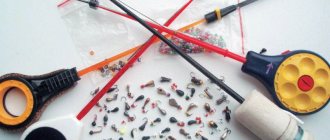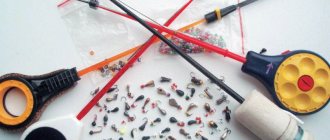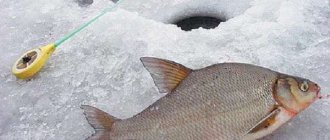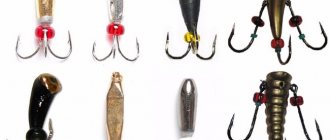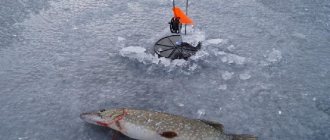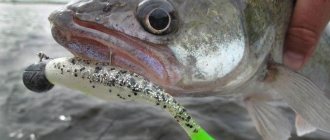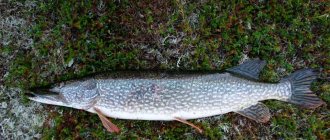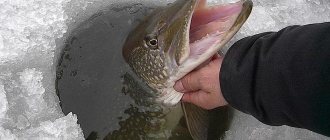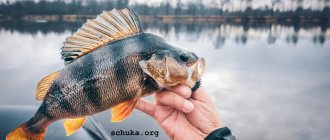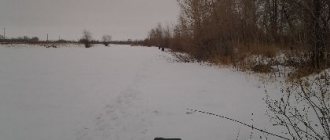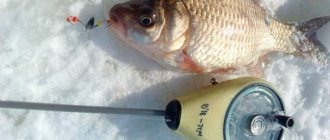Reelless baits for roach are gaining popularity among winter hunters of this fish. No-bait fishing with jigs in winter has become a separate, independent area of winter fishing. The object of such fishing is an active fish that reacts to a stimulus. The working fishing tactic is active search. Some fishermen use this method together with other gear, passing the time while waiting for a bite on a nearby float rod. Another group of fishermen uses only this gear in principle – just for fun.
Winter roach
Roach is a common trophy for baitless fish, along with perch, due to its wide distribution in water bodies. It’s not difficult to pull out a couple of roach while fishing. However, in order to count on a full catch of large fish, you need to know some features of its winter habits. An article about the features of winter fishing for roach:
Advantages
The fundamental differences between fishing with a reelless jig and classic winter fishing lie in the method of influencing potential prey. In the first case, the main goal is to visually and tactilely deceive the fish; this requires certain skills and mastering the secrets of winter fishing with a reelless reel. But the complexity of the process is compensated by its efficiency throughout the winter period and in any body of water.
A huge variety of equipment variations simplifies targeted fishing for a specific type of fish, in particular large predators.
The jigs themselves can be made independently; they are usually cast from lead or machined from pieces of brass. This will not only save money, but also give the fishing process an even more creative component.
In the case of traditional bait, there are fewer requirements for the skills and actions of the fisherman himself, but the range of fishing opportunities is much lower.
And off we go! Experienced fishermen diligently dissuade. Like, you can’t learn anything from something ready-made; obvious overpayment for a fishing rod; The Internet is full of information on how to assemble good tackle yourself. Another option is to find someone experienced (of course, this would be good, but it must be earned, so that someone experienced will fully and regularly babysit the newcomer). In general, you push a person so that he without fail rushes to fill his own cones. To take the path of trial and error.
Victorych with
biuik
Steser
Blocked
Evgeniy L.
Pilyulkin
Victorych with
it's not the same for everybody. How can you collect if you don’t understand what to collect. You know better than we are just a village. Well, it’s nonsense to write, this is everyone’s business, including yours!!
Tips for fisherman: The best reelless reels for winter fishing for roach - Let's take it step by step
———- Message added at 17:03 ———- Previous message posted at 17:02 ———-
you're just unlucky 100%
———- Message added at 17:04 ———- Previous message posted at 17:03 ———-
I answered the fisherman and this is my opinion and I will not change it. this year I wrote that I would try to collect the gear myself and now there is something to look at!! where to take an example!!
August
Pilyulkin
Victorych with
Pilyulkin
medic
Steser
Blocked
Andrey S
And off we go! Experienced fishermen diligently dissuade. Like, you can’t learn anything from something ready-made; obvious overpayment for a fishing rod; The Internet is full of information on how to assemble good tackle yourself. Another option is to find someone experienced (of course, this would be good, but it must be earned, so that someone experienced will fully and regularly babysit the newcomer). In general, you push a person so that he without fail rushes to fill his own cones. To take the path of trial and error.
If you try to do this yourself from scratch, you can easily break down. So, I subscribe to Viktorovich’s comments. Start with normal ready-made gear, and then, as some of its shortcomings and limitations are identified, take action and look for alternatives. After all, everything is learned by comparison.
Finally, a few thoughts on independently assembling tackle for a nozzle.
By the way, I recently watched penguin videos and noticed an interesting model of the nod - the first 3.5-4 cm are hard, and then there is a not particularly smooth transition to “snot”. The whole nod is 10 centimeters. I’ll definitely make myself one of these!
My fishing is 90% in still water, mostly at depths from 1 to 5 meters. The weight of the jig is 0.3-0.4 g. (favorite range at the moment), sometimes up to 0.7 g. Types of jigs - uralka, droplets, pellets, ants, bananas, etc., sometimes goats. I rarely catch devils, store-bought ones don’t work (although I regularly buy them for testing, but never get around to trying them), homemade ones are in my plans, but I’m lazy.
I use 0.1 -0.12 fishing line.
I forgot about the coils. For me, there is no fundamental difference yet: open, closed, semi-closed. A beginner must pay attention so that the line does not get chewed by the spool. If at the same time the design is not dismountable (the spool cannot be removed from the axis), then it is generally tin. You'll have to tear the fishing line and tie it on a new one.
Weight of the rod assembly. Personally, I’m not bothered by a 40-50 gram weight, but if a weight of no more than 40 grams is objectively desirable, but this is not a dogma.
“Ants” come in different sizes and are used for catching perch. Colored beads or cambrics are hung on them to ensure a more effective catch. Large baits are used when the first ice appears or the last ice melts. And small and medium-sized baits are used throughout the winter.
No-bait roach fishing
Catching roach with a reelless jig requires some knowledge and fine fishing rod equipment, as well as a set of special baits - reelless jigs. Over the many years of development of this method of fishing, we can definitely say that the largest roach specimens are caught in winter without bait. Probably the reason for this is the greater aggressiveness of large fish, as well as the active search tactics required for this method of fishing. In the north, sorog is successfully caught using a reelless reel, and in Siberia, chebak. So the spread of such fishing is a widespread phenomenon. And every year there are more and more fans of the rewinder. An article about reelless fishing.
Roach
The most tempting thing for fans of winter fishing with a reelless bait was the roach. The most active period for her is the last ice. Not all fishermen are deterred by its unreliability, which adds more work to rescuers in the spring.
Roach responds to almost any variety of jig, the main thing is that the color is brighter. There are also no special requirements for the playing technique, because this type of fish does not have a specific character; there are both active and passive, cautious individuals.
Experiments on equipping a reelless reel with additional elements, such as beads, chains, wings, etc., are suitable for roach fishing. The fish will definitely appreciate this.
Tactics
As already mentioned, the main tactic is active search. But this statement is more relevant for the beginning and end of winter, when the fish are active, and fishing does not even require bait. Let's take a closer look at how to catch roach in winter using a reelless reel in different time periods.
In the dead of winter, each hole is carefully fished, maybe even fed and hatched until the fish become active. After all, the absence of bites during this period does not mean that there are no fish under the hole. During this period, the roach may simply not take the bait, but stand nearby in an inactive state. In such cases, if there is confidence that the fish are clearly here (for example, they are biting at bloodworms from neighboring fishermen), the holes are supplemented with food, the bait and game are changed - and often this bears fruit. During the deep winter period, it is better to use the usual fishing tactics with baited jigs or fishing rods with a float - drill several holes, bait and then fish thoroughly, changing reelless baits and fishing methods until you find a catchable option. In this case, bait can activate the fish, forcing it to feed.
On the first ice, the roach takes the reeler boldly, the main thing is to find the right place. This also happens at the end of winter, when the fish begins to feed intensively, preparing for spawning. At this time, you should not sit on one hole. No bites - we move on. At this time, you can count on bites at shallow depths, near the grass along the shores and islands, but in the middle of nowhere - in deep places, up to 2-6 meters.
Tactics for fishing with a reelless reel in winter
No. 1. Search and feeding.
Little by little I feed several holes (4-15 pieces depending on the reservoir) over as large an area as possible (between the nearest holes from 10 to 200 meters) in order to cover different depths and relief as much as possible.
I walk with a fishing rod through all the prepared holes and make 5-10 retrieves, no more. If there is an active fish, it immediately shows itself, not with a bite, but with a poke. I don’t try to catch all the fish at once, so that the school remaining under water will attract more and more roach or bream. I remember this hole and move on, and if it’s frozen, then I run J.
If there are no bites during the first round of all the holes, I change the jig, or rather, I take a fishing rod with a different jig, because I’m almost always too lazy to change the jig when fishing, especially in the cold and wind
